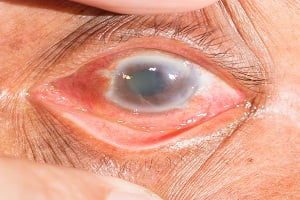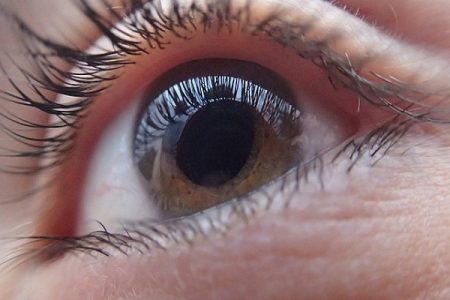Glaucoma is a disease which is caused by an increase in the eye pressure which progressively damages the optic nerve of the eyes. The disease leads to vision loss which is irreversible and many other symptoms which worsen the disease condition.
Glaucoma signs and symptoms
The signs and symptoms of glaucoma are not so visible in most of the people in early stages till the vision loss triggers and the disease progression occurs to an extent that it is irreversible. For this reason, glaucoma is also sometimes called the ‘silent thief of vision’. Glaucoma can be treated early on to reduce the severity. Some of the top rated pharmacies online or in the physical world offer expert advice, and some can even refer you to local opticians.
A proper monitoring and early detection and diagnosis of glaucoma are important to prevent disease progression to the extent that it causes vision loss and other disease conditions.
One can get the diagnosis of glaucoma early by proper monitoring through regular eye checkups every 1 to 2 years by an eye specialist. If a person has a family history of glaucoma and is of 40 years and above in age, he or she is at a higher risk. In such cases, one should go through regular eye checkups to detect glaucoma or any disease condition in the eyes.
The signs and symptoms of glaucoma although are not noticed in early stages till the optic nerve get damaged due to increased eye pressure, there are some warning signs of the disease which indicate you need to undergo proper eye checkup to detect any eye disease or progression of glaucoma. These signs of glaucoma include:
- Sudden eye pain
- Headache
- Recurrent pain around the eyes
- Itching and dry eyes
- Burning in the eyes
- Having double vision or distorted vision
- Sensitivity to light and glare
- Difficulty in focusing near or far objects
- Change in the color of iris
- Swollen eyelids
- Trouble in adjusting eyes in the dark room
Other than those listed above, there are some symptoms that indicate serious problems and may need urgent medical attention such as:
- Blurry vision
- Extreme eye pain
- Seeing halos around lights
- One eye suddenly lost vision
- Seeing black spots in peripheral or central vision
- Nausea
- Vomiting
- The vision of eyes get narrowed
- Redness in the eyes
- Colored rings around lights are seen
There are many different types of glaucoma. Two of them are most common – open angle glaucoma and angle closure glaucoma.
The signs and symptoms depend upon the type and condition of the disease that one has.

Open Angle Glaucoma
It is a type of glaucoma which occurs due to blockage within the trabecular meshwork – the drainage system of the eye. The fluid does not drain out of the eyes due to its blockage and thus fluid pressure increases inside the eyes leading to the damage of optic nerve fibers. This marks the beginning of glaucoma.
Early warning signs of open angle glaucoma are not generally visible. Sight loss is slow and progressive for many years and get unnoticed.
People notice the vision loss and other symptoms when the disease advances and the vision loss progresses to an extent which is irreversible even with treatment and surgery.
Signs and symptoms of open angular glaucoma
- Loss of peripheral vision slowly and progressively
- Patchy blind spots observed in peripheral or central vision in both the eyes
- Severe eye pain
- Headache
- Nausea and vomiting
- Blurred vision
- Tunnel vision in advanced stage
The open angle glaucoma has few signs and symptoms before advancement of the disease and before severe damage to eyes and eyesight occur. It is, therefore, important to monitor and be alert about the warning signs and go through regular eye check-ups to detect the disease in early stages.
One needs to be cautious if he or she is at a risk of getting the disease in case of a family history of glaucoma.
If glaucoma is detected on time, your doctor can choose the right treatment and medication to save the sight for life and also to slow down the worsening of symptoms and disease progression.
If left untreated, it will lead to permanent vision loss or blindness.
Angle Closure Glaucoma
This type of glaucoma occurs due to the closure of drainage angle by the iris, increasing the fluid pressure in the eyes leading to optic nerve damage and gradually vision loss and glaucoma.
Eye pressure increases because the iris covers the drainage angle. The development of pressure in eyes may happen suddenly and can be noticed or it may be gradual and go unnoticed in some cases.
Angle closure glaucoma is classified into two subtypes –
- Symptoms of acute angle closure Glaucoma
- Chronic angle closure glaucoma
Symptoms of acute angle closure Glaucoma
The symptoms are easy to detect as they occur suddenly and quickly. The complete vision loss can be controlled and the treatment of the symptoms is relatively easy.
Signs and symptoms of Acute-angle closure glaucoma:
- Mild eye pain and headache
- Seeing halos around lights
- Blurred vision
- Redness in the eye
- Eye pain accompanied by nausea and vomiting
Symptoms of chronic angle closure glaucoma
Early signs and symptoms of this type of glaucoma are hard to detect as it is slow and the progressive loss of vision can cause the disease to go unnoticed. The symptoms are visible when vision loss is initiated and the disease is advanced.
The symptoms of chronic angle closure glaucoma progress slowly and can lead to damage of the vision completely. The symptoms are more similar to open angle glaucoma.
An early diagnosis and treatment of glaucoma is necessary to save vision to some extent and also to slow down disease progression. If left untreated it will lead to blindness. About 15% of people who are treated for glaucoma become blind with at least one eye within 20 years.






